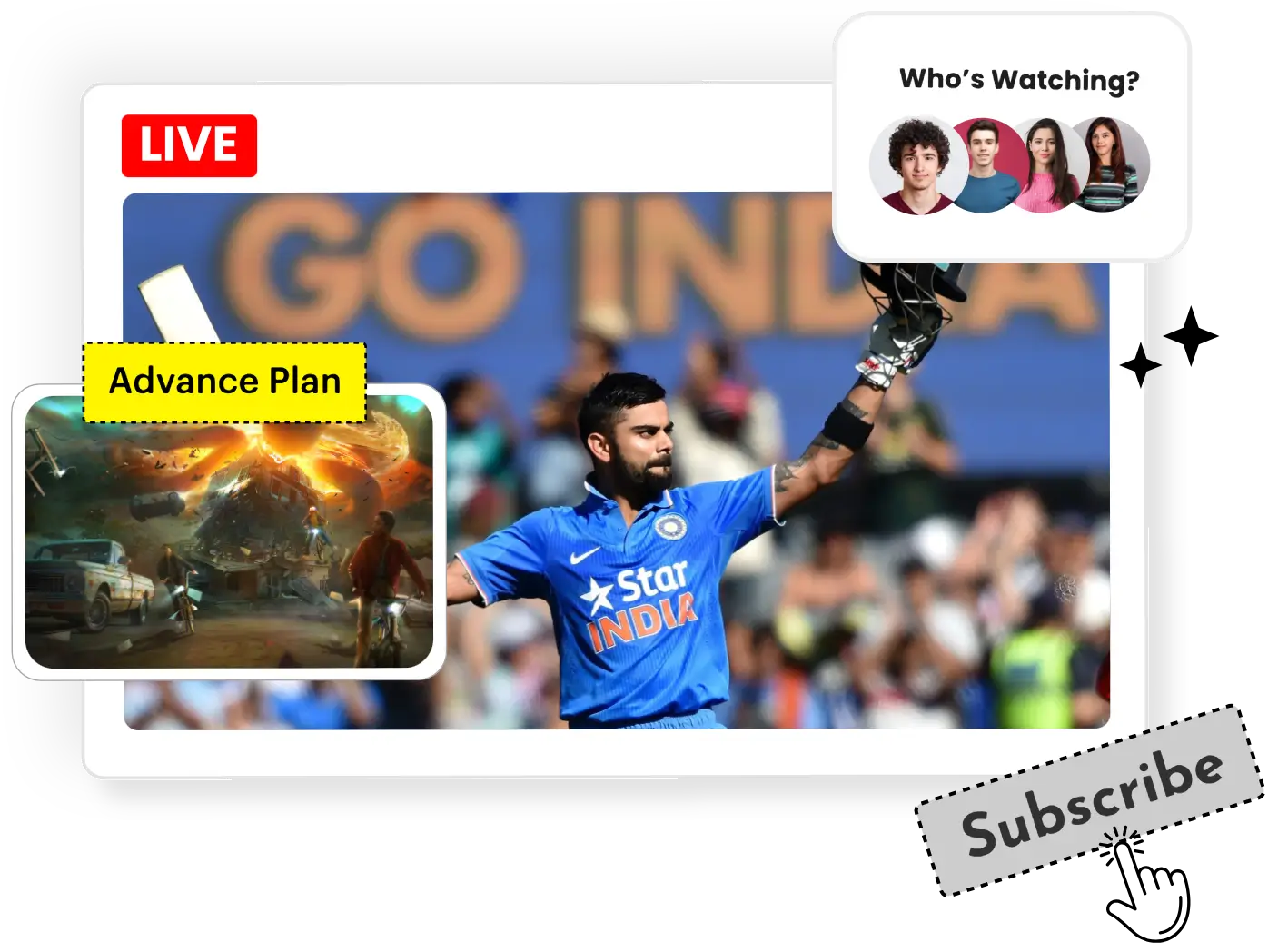What is Latency?
Latency means passing portions of data from one location with additional time.
What is Low Latency?
If some seconds of latency is regular, what is reduced latency? When it concerns streaming, reduced latency explains a glass-to-glass delay.
It’s a subjective term. The famous Apple HLS streaming method defaults to about 30 secs of latency (much more on this listed below) while watching traditional cable television and also satellite programs with concerning a five-second delay behind the live occasion.
Nevertheless, some streaming events need even faster delivery. Therefore, separate classifications like ultra reduced latency and near real-time have emerged, coming in at near to one second. This team of streaming applications typically schedule for interactive use situations, two-way chat, and also real-time device control (assume live-streaming from a drone).
To check out present trends as well as technologies around low-latency streaming, tech scientists take their seat.
What is reduced latency streaming?
Stream latency is the delay between your electronic camera catching an occasion and also the time displays to viewers. … If you chat live with customers, lower latency is best to reply to viewer inquiries and comments. Note that with lower latency, your audiences may experience even more playback buffering.
When Is Low Latency Important?
No person wants unusually high latency, naturally– yet in what contexts does low latency genuinely matter?
For a lot of streaming situations, the average 30- to 45-second hold-up isn’t problematic. Most broadcasters evaluated in our 2019 Video Streaming Latency Report showed that they were experiencing latency in the 10-45 2nd variety.
Just how much latency are you currently experiencing?
Returning to our concert example, it’s frequently unimportant if 36 seconds pass before audiences figure out that the lead guitar player damaged a string. For some streaming usage situations, particularly those needing interactivity latency is a business-critical consideration.
What Classification of Latency Fits Your Circumstance?
You’ll wish to set apart in between the numerous groups of latency as well as figure out which is finest suited for your streaming circumstance. These classifications include:
– Near live for video conferencing as well as remote tools
– Low latency for interactive material
– Lowered latency for real-time costs material
– Characteristic HTTP latencies for straight shows as well as one-way streams
You’ll notice that the more passive the program, the higher it serves for latency to climb.
You’ll likewise see in the chart above that both most typical HTTP based procedures, HLS and MPEG DASH, go to the luxury of the spectrum. So why are one of the most popular streaming procedures likewise sloth-like when it involves measurements of glass-to-glass latency?
Because of their capability to range and also adjust, HTTP based protocols make sure reliable, high-grade experiences across all screens. It achieves modern technologies like buffering as well as adaptive bitrate streaming, both of which boost the viewing experience by raising latency.
High resolution is terrific. But what about scenarios where a top-notch viewing experience needs lightning-fast distribution? For some use cases, obtaining the video clip where it needs to go promptly is more important than 4K resolution.
Low-Latency Streaming Protocols
Apple HLS is amongst the most extensively made use of streaming methods due to its integrity. However, it is not for real low-latency streaming. As an HTTP-based protocol, HLS streams portions of data, and video games require a specific number of pieces (typically three) before they start playing.
Fortunately, emerging technologies for quick distribution are getting traction. While HLS traditionally supplies latencies of 6-30 seconds, the Low-Latency HLS expansion has now been included as a feature set of HLS, assuring to give sub-2-second video clip delivery at the range. Also, broadcasters are currently implementing choices such as WebRTC, SRT, as well as CMAF for DASH. Below’s a look at how various technologies contrast:
– RTMP provides premium streams effectively, yet no longer sustains because of the approaching fatality of Flash. This protocol remains in operation for quick video contribution, yet will certainly vanish from the posting end of many workflows.
– WebRTC is increasing in popularity as an HTML5-based option that’s fit for creating browser-based applications. WebRTC permits low-latency delivery in a browser-based, Flash-free setting; however, it’s limited in scale without leveraging a media server like Wowza Streaming Engine.
– SRT is prominent for use instances involving unstable or unreliable networks. As a UDP-like protocol, SRT is terrific at delivering premium video over cross countries, yet it deals with player support without a great deal of personalization. Therefore, we more typically utilize it for transferring web content to the consuming factor, where we transcode it into another protocol for playback.
– Low-Latency CMAF for DASHBOARD is a mounting option to typical HTTP-based video clip delivery sustained by Akamai. While still in its infancy, the innovation reveals a pledge of providing super-fast video at scale.
– Low Latency HLS, which is sustained by Webnexs Streaming Engine software, is the following big point when it involves low-latency video clip delivery. The spec promised to achieve sub-two-second latencies at scale– while additionally providing backward compatibility to existing clients. Massive implementations of this HLS extension require assimilation with Players and CDN, and also suppliers throughout the streaming ecological community are functioning to add assistance.
For whatever low-latency method you pick to employ, you’ll want streaming modern technology that provides you with fine-grained control over latency as well as video clip quality and uses the most exceptional adaptability.
With a variety of attributes, jobs as well as protocol-compatibilities, there’s a low-latency option for each usage situation. Whether you’re relaying with Streaming Engine or Streaming Cloud, we have the innovation to get your streams from electronic camera to screen with unparalleled speed, quality, dependability, as well as resiliency.
Supplying low latency live streams is essential for real-time sporting activities, online pc gaming, and also practically anybody who wants to offer a fantastic online video clip experience. In this blog site, I’ll address cutting-edge ways that Limelight is fixing this problem.
To take a close view at the appliance here, have a look at this low-latency real-time video clip streaming blog, where I reviewed the business chauffeurs for enhancing live TELEVISION sports programs with live-streaming. The obstacles provided in providing real-time streams with low latency is to make sure that audiences can experience the event in close to actual- time.
Difficulties Supplying Web Video Clip Streaming at Low-Latency
Because each portion is created and seen in real-time, the chunk size is a considerable part of latency. The default HLS piece size is 10 secs, and before delivery begins should develop three chunks, leading to a delivery latency of up to 45 seconds when CAN ingesting, transcoding, and factor in the distance in between source as well as the audience, and shipment.
What does Limelight do to reduce live-streaming delays?
An apparent approach to reducing latency is to reduce the portion dimension. The primary thing is Multimedia gadget Distribution (MMD) Live small chunk streaming, targeted at organizations that desire Limelight to take care of transcoding.
We ingest RTMP real-time streams and transcode to HLS or DASHBOARD with one 2nd dimension pieces, as well as supplied to users with overall latency of as low as 6 seconds.
It will undoubtedly minimize live-streaming latency down to as reduced as 3 seconds, a substantial renovation over existing HLS, and also DASH live-streaming shipment solutions. There are numerous successful in-production releases of both MMD Live little chunk streaming and Video Acceleration that satisfy the use situation latency demands.
What’s Next?
The industry focuses on solutions to change Adobe’s upcoming end-of-life for Flash for low-latency streaming, for which there is an innovation called WebRTC (Internet Real-time Communication), which is sustained by all the preferred web browsers. webnexs provides a WebRTC-based low-latency real-time video streaming service called Webnexs Realtime Streaming across our global content distribution network.
By incorporating WebRTC streaming support into the CDN, material distributors will certainly have the ability to quickly carry out scalable real-time video clip streaming operations such as gaming, video gaming, and also sports transmitting that need the most affordable possible latency. Visitors will finally have the ability to view broadcast high-quality real-time streaming video clips as close to real-time as possible.
Target Use Cases for Low-Latency Streaming
Simulcast Live Athletic Contest
Decrease the latency distinction between a TV program and the online stream delivery
Live OTT Sports Events
Regular viewing experience throughout multi-devices for non-simulcast delivery
ESports (Online Live Pc Gaming).
I am scaling the distribution of low-latency online video delivery to big audiences.
We are ensuring a regular low latency experience to customers across a variety of tools.
The betting usage situation for reduced latency streaming has two crucial considerations. The most noticeable is to provide regularly reduced latency to online gamers, so they all see the action in near real-time on any gadget, anywhere they are.
For the online casino site, if the latency to players reduces, it speeds up play, leading to more dealing rounds and also raised profits.
Apple HLS is among the most extensively made use of streaming methods due to its integrity, yet it had not developed for real low-latency streaming.
To take a close glance at the significance below, inspect out this low-latency live video streaming blog, where I discussed the service motorists for matching live TELEVISION sporting activities programs with online streaming.
And the obstacles provided in delivering live streams with reduced latency so that visitors can experience the occasion in near actual- time.
The very first is Multimedia gadget Distribution (MMD) Real-time small chunk streaming, targeted at companies that desire Spotlight to handle transcoding.
There are some active in-production deployments of both MMD Live tiny portion streaming and Video Acceleration that satisfy the use of instance latency demands.
By integrating WebRTC streaming assistance into the CDN, content representatives will be able to quickly carry out scalable online video clip streaming processes such as gambling, video gaming, and sports broadcasting that require the most affordable possible latency.
Who Requires Reduced Latency?
Let’s take a view at a couple of streaming use cases where reducing video lag is without a doubt vital.
Second-Screen Experiences
If you’re viewing a live occasion on a second-screen application (such as a sporting activities league or main network application), you’re likely running several seconds behind online TV.
While there’s integral latency for the transmission, your second-screen application needs to suit at least that very same degree of latency to supply a regular watching experience.
Suppose you’re enjoying your alma mater playing in a rivalry game. In that case, you don’t desire your experience spoiled by comments, notices, or even the neighbours next door celebrating the game-winning rating before you see it. It leads to unhappy followers and disgruntled (usually paying) customers.
Video clip Chat
We have seen all televised interviews where the press reporter is speaking to somebody at a remote place, and the latency in their exchange comes out in long stops briefly as well as the two events chatting over each other. That’s since the latency goes both ways.
When real immediacy matters, about 500 milliseconds of latency in each instruction is the ceiling, that’s short enough to permit smooth discussion without awkward pauses.
Betting and Bidding
Tasks such as auctions as well as sports-track betting are exciting as a result of their fast lane. And that speed asks for real-time streaming with two-way interaction.
Ultra low latency streaming removes troublesome hold-ups, making sure that everybody has the same possibility to position their bets in a time-synchronized experience. On the internet, public auctions and trading systems are excellent services, as well as any delay that can indicate quotes or professions expertly.
Computer Game Streaming as well as Esports
This video game is cheating, or more colourful innovation knows that gamers require time on a screen. Sub-100-millisecond latency is a must. No person wants to play a video game through a streaming solution and uncover that they’re shooting at enemies that are no more there.
In platforms offering attributes for straight viewer-to-broadcaster communication, it’s also essential that viewer pointers and even remarks get to the streamer in time for them to defeat the degree.
Latency explains the delay between when you record a video clip and displaying it on a visitor’s tool. Passing portions of data from one area to an additional take time, so latency develops up at every step of the streaming workflow. Various other terms, like ‘capture latency’ or ‘gamer latency,’ only account for lag presented at a specific action of the streaming operations.
For this reason, different classifications like ultra-low latency and near real-time have emerged, coming in at under one second. Ultra low latency streaming removes bothersome delays, ensuring that everybody has the very same chance to position their wagers in a time-synchronized experience.
How Does Low-Latency Streaming work?
Now that you know what reduced latency is and when it is necessary, you’re possibly questioning, how can I deliver lightning-fast streams?
As with most points in life, low-latency streaming includes trade-offs. You’ll need to stabilize three elements to find the mix that’s right for you:
– Inscribing effectiveness and also device/player compatibility.
– Target market dimension as well as geographical distribution.
– Video resolution and also complexity. ( Technical stuffs not disclosed here , ill write in another blog)
The streaming procedure you select makes a significant difference, so let’s dig into that.


